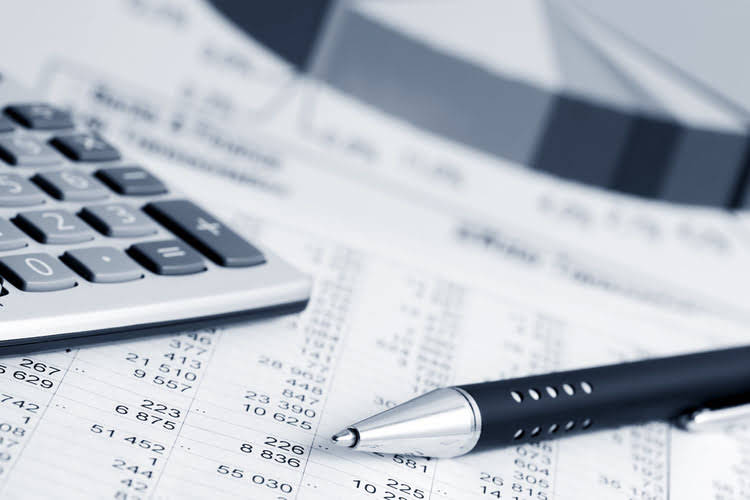What Is a Contra Account? The Motley Fool

In its general ledger, the business will want to capture its gross sales figures and the actual value of the discount. The concepts of debits and credits in accounting dictate how transactions are recorded. For instance, to increase asset and expense accounts, we simply record a debit and to decrease those accounts, we can record a credit.
- Accountants use contra accounts rather than reduce the value of the original account directly to keep financial accounting records clean.
- The allowance for doubtful accounts is not specifically reported, but the 10(K) reported that the allowance is immaterial to the amount.
- Contra asset accounts include allowance for doubtful accounts and accumulated depreciation.
- In other words, this account’s credit balance is contrary to (or opposite of) the usual debit balance for an expense account.
- The balance in the allowance for doubtful accounts represents the dollar amount of the current accounts receivable balance that is expected to be uncollectible.
- So as values shift depending on real-world factors, rather than making deductions or adjustments to the original or “parent” account, you would record these changes in the contra account instead.
Contra account examples
The accumulated depreciation will ultimately reduce the value of fixed assets when the two accounts are netted with each other. As a reminder, assets and expenses are debit accounts whereas liabilities and revenues are credit accounts. One other type of account is the contra account and for accountants, this is a must-know. In the above example, the debit to the contra liability account of $100 lets the company recognize that the bond was sold at a discount. Of that amount, it is estimated that 1% of that amount will become bad debt at some point in the future.
Examples of Contra Accounts
So as values shift depending on real-world factors, rather than making deductions or adjustments to the original or “parent” account, you would record these changes in the contra account instead. By viewing these accounts — the parent and contra — in tandem, business owners can gain broader insights, preserve the historical figures stored in the parent account, and make accommodations for any relevant changes. In order to keep the accounts receivables as clean as possible with their historical values, we will use this contra account called allowance for doubtful accounts. The allowance for doubtful accounts is not specifically reported, but the 10(K) reported that the allowance is immaterial to the amount. This make sense because Home Depot wouldn’t be carrying accounts receivable with long payment terms. Most accounts receivable would just be the time between purchase and credit card settlement.
What Is the Benefit of Using a Contra Account?

For example, a building is acquired for $20,000, that $20,000 is recorded on the general ledger while the depreciation of the building is recorded separately. A delivery van is purchased by a business to use in delivering product and picking up materials. The company uses Straight-Line Depreciation to track the loss of value of the asset over time.
Moreover, contra expense account accounts play a role in enhancing the transparency of financial reporting. By clearly delineating reductions in expenses, these accounts help to avoid the potential for overstating costs. This transparency is crucial for maintaining the trust of investors, creditors, and other stakeholders, as it demonstrates a commitment to accurate and honest financial reporting. Contra expense accounts are specialized accounts used to record reductions in specific expense categories, providing a clearer view of net expenses.

Examples of Contra Expense Accounts
- A separate account used in such a situation is sometimes called a adjunct account.
- Contra revenue is a general ledger account with a debit balance that reduces the normal credit balance of a standard revenue account to present the net value of sales generated by a business on its income statement.
- Examples of contra liabilities are Discounts on Bonds and Notes Payable and Short-Term Portion of Long-Term Debt.
- To put it another way, a contra account is an account listed within a general ledger with the purpose of capturing the reduced value of a paired or related account when the two are added together.
When the account receivable is written off, it is added to bad debt expense on the income statement and placed in the contra account. If a company has a high or fast-growing allowance as a percentage of accounts receivable, keep a close eye on it. For instance, if a company has a plant asset such as Equipment with a debit balance of $92,000 and the account Accumulated Depreciation has a credit balance of $50,000, the carrying amount (or book value) of the equipment is $42,000. It also shows the carrying (net) amount of $19,000, which you report to your firm’s balance sheet. For example, Accumulated Depreciation is a contra asset account, because its credit balance is contra to the debit balance for an asset account. Typically, a company fails to collect all of the money owed by customers making purchases on credit.
- Another description of a contra expense account is an account that reduces or offsets the amounts reported in another general ledger expense account(s).
- This depreciation is saved in a contra asset account called accumulated depreciation.
- Taken together, the asset account and contra asset account reveal the net amount of fixed assets still remaining.
- Of that amount, it is estimated that 1% of that amount will become bad debt at some point in the future.
- In order to record this ongoing value drop, you would use a corresponding contra account — an Asset Depreciation account.
- A contra account is an account with a balance opposite the normal accounts in its category.
- As your business acquires new assets (e.g., machinery, office equipment, vehicles), you record the initial purchase value in your Fixed Asset account.
- The Allowance for Doubtful Accounts is directly related to the asset account entitled Accounts Receivable.
- The purpose of a contra expense account is to record a reduction in an expense without changing the balance in the main account.
- For example, if a company returns defective goods to a supplier, the value of the returned goods is credited to a purchase returns and allowances account, a type of contra expense account.
- Therefore, the net amount of the accounts receivable that is expected to turn to cash is $38,000.
- In other words, contra accounts are used to reduce normal accounts on the balance sheet.
